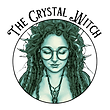Everything You Think You Know About the Witch Trials… Isn’t Quite True, were witches burned at the stake?
- The Crystal Witch
- Aug 29
- 3 min read
When we think of the witch trials, we often imagine bonfires, women tied to stakes, and black-clad figures whispering curses into the night. That’s the picture that stories and films have painted for us. The truth is more tangled, more ordinary in some ways, and far more human in others. These myths matter because they shape how we remember the past and how we understand what it meant to be called a witch, were witches burned at the stake?
Myth 1: Witches in England were burned at the stake
One of the most enduring images is fire, yet in England that was not how witches died. Burning was more common on the continent, especially in parts of Germany and Switzerland. In England, people accused of witchcraft were hanged. Scotland did burn witches, though not as often as stories make it sound. The idea of the fiery pyre has stuck because it is dramatic and easy to imagine, but for many victims in England it was the gallows, not the flames.

Myth 2: Millions died in the witch trails
The numbers often grow in the telling. The reality is still horrific, but more grounded. Historians estimate that around forty to sixty thousand people were executed in Europe across several centuries. This does not lessen the tragedy. Each of those lives mattered. Each one was part of a family, a community, a story cut short. Saying “millions” makes it sound too large to grasp. Knowing the real scale brings the humanity back into focus.
Myth 3: Only women were accused
It is true that women made up the majority of those tried and killed, but they were not alone. Men too were accused, sometimes whole families caught up in the tide of suspicion. In Iceland, men were the main targets of witchcraft trials. The image of the witch as an old crone is powerful, but it is not the whole truth. The fear of witchcraft could touch anyone.
Myth 4: Accusations were about magic as we think of it today
When we hear “witchcraft,” we might picture spell books, cauldrons, and charms. In the past, witchcraft was a word that could mean almost anything outside the accepted order. It might be a woman selling healing herbs. It might be a neighbour blamed when a cow fell ill. It might be the poor, the outspoken, or simply the unlucky. Many trials grew from grudges, jealousy, or fear more than from any belief in real spellcasting.

Myth 5: Salem was the heart of it all
The Salem trials are the best known, but they were not typical. They happened later, in colonial America, and lasted little more than a year. Europe had already seen centuries of witch hunts by then. Salem lingers in memory because it was so well recorded and fits neatly into the story of early America. Yet to truly understand witch trials, we must look further back and across the wider world.
Myth 6: Witches wore pointy hats and rode broomsticks
The Halloween witch with her crooked hat and flying broom is a much later creation. During the height of the trials, no one expected a witch to look that way. The pointy hat has roots in medieval images of outsiders, such as alewives or Jewish communities, later tangled up with the witch figure. The broomstick came from folklore too, shaped by fears and imagination rather than courtroom evidence.

Why It Matters
These myths might seem harmless, but they blur the truth. The witch trials were not grand tales of sorcery and fire, they were times when fear and hysteria gripped entire communities. Neighbours turned on neighbours, families were torn apart, and suspicion spread faster than reason. Ordinary people suffered not because of magic, but because fear is powerful and can twist a community against itself.
As a modern day witch, I find that peeling back the myths also gives us strength. We can honour those who came before not as nameless figures in grim stories, but as real people who lived, loved, and were lost in the chaos. Their memory reminds us how dangerous hysteria can be, and how important it is to seek truth. The myths may dazzle, but the real magic is in remembering their humanity.
